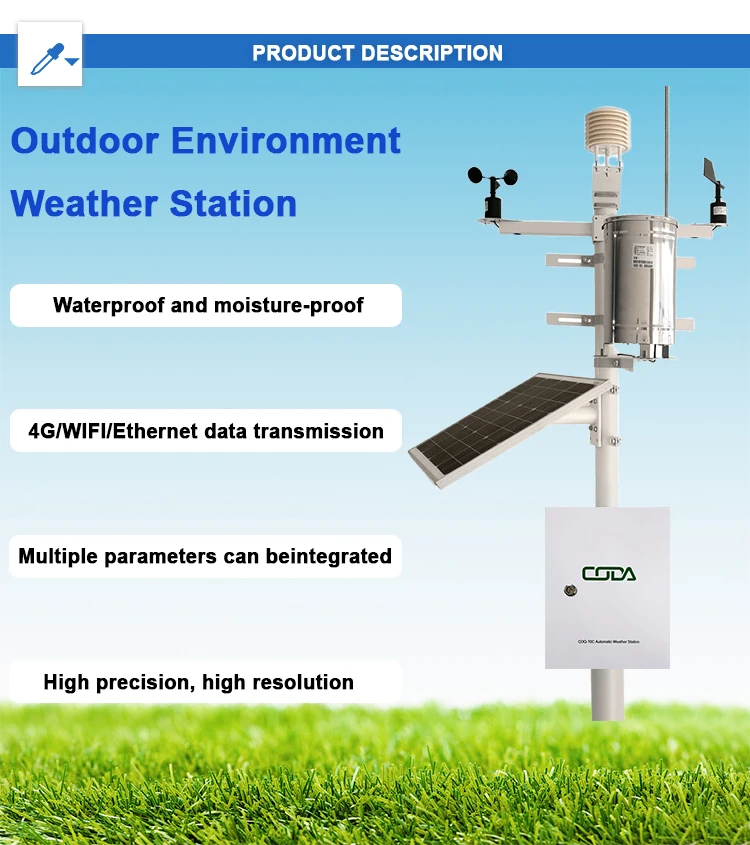Advantages and Disadvantages of Automatic Weather Stations

# Advantages and Disadvantages of Automatic Weather Stations
## Introduction
Automatic Weather Stations (AWS) have revolutionized the way we collect and analyze meteorological data. These systems provide continuous, real-time weather information without the need for constant human intervention. While they offer numerous benefits, they also come with certain limitations. This article explores both the advantages and disadvantages of AWS to help you understand their role in modern meteorology.
## Advantages of Automatic Weather Stations
### 1. Continuous Data Collection
One of the primary advantages of AWS is their ability to collect data 24/7 without interruption. Unlike manual weather stations, which require human operators to record measurements at specific intervals, AWS can provide a constant stream of data. This is particularly valuable for monitoring rapidly changing weather conditions.
### 2. High Accuracy and Precision
Modern AWS are equipped with highly sensitive sensors that can measure various weather parameters with great accuracy. These systems minimize human errors associated with manual readings, ensuring more reliable data for analysis and forecasting.
### 3. Remote Monitoring Capabilities
AWS can be installed in remote or hazardous locations where it would be difficult or dangerous for humans to operate. Data can be transmitted wirelessly to central monitoring stations, allowing meteorologists to track weather conditions in areas that were previously inaccessible.
### 4. Cost-Effectiveness in the Long Run
While the initial investment in an AWS might be significant, these systems prove cost-effective over time. They reduce labor costs associated with manual data collection and can operate for extended periods with minimal maintenance.
### 5. Real-Time Data Availability
The ability to access weather data in real-time is crucial for various applications, including aviation, agriculture, and disaster management. AWS provide immediate updates that can be critical for making time-sensitive decisions.
## Disadvantages of Automatic Weather Stations
### 1. High Initial Costs
Setting up an AWS requires a substantial initial investment. The cost includes not just the equipment but also installation, calibration, and integration with existing systems. This can be a barrier for some organizations or developing regions.
### 2. Maintenance Requirements
While AWS require less maintenance than manual stations, they still need regular servicing. Sensors can drift out of calibration, batteries need replacement, and equipment may require cleaning or protection from environmental damage.
### 3. Vulnerability to Technical Failures
Like all electronic systems, AWS are susceptible to technical malfunctions. Power outages, communication failures, or sensor degradation can lead to data gaps or inaccuracies if not promptly addressed.
### 4. Limited Ability to Observe Certain Phenomena
Some weather phenomena, such as cloud types or certain atmospheric conditions, still require human observation. While AWS can measure many parameters, they may not fully replace the nuanced observations of trained meteorologists in all cases.
### 5. Data Interpretation Challenges
The large volume of data generated by AWS requires sophisticated analysis tools and trained personnel to interpret correctly. Without proper expertise, the wealth of information may not be fully utilized or could be misinterpreted.
## Conclusion
Automatic Weather Stations represent a significant advancement in meteorological data collection, offering numerous benefits in terms of continuous operation, accuracy, and remote monitoring capabilities. However, they also come with challenges related to cost, maintenance, and technical reliability. The ideal approach often involves a combination of automated systems and human expertise to ensure comprehensive weather monitoring and accurate forecasting. As technology continues to advance, we can expect AWS to become even more reliable and versatile in the years to come.